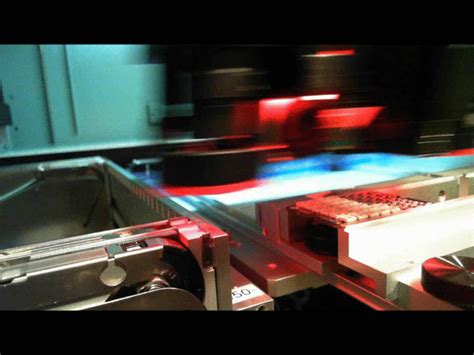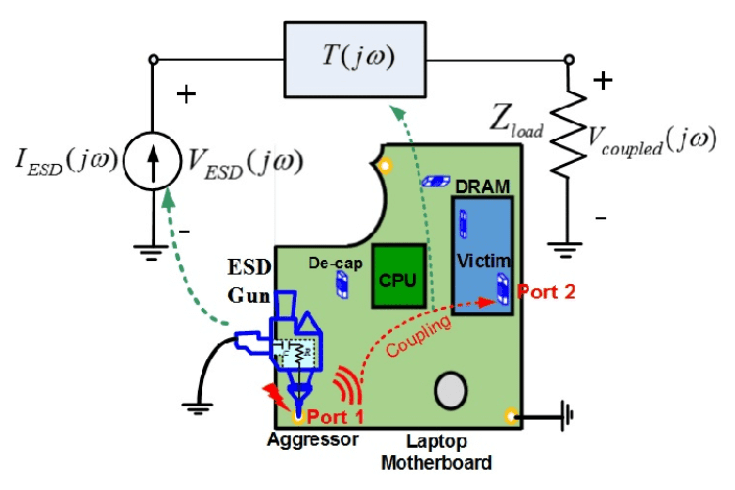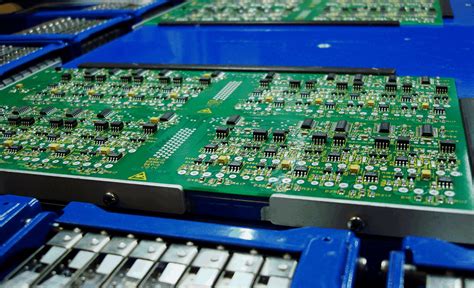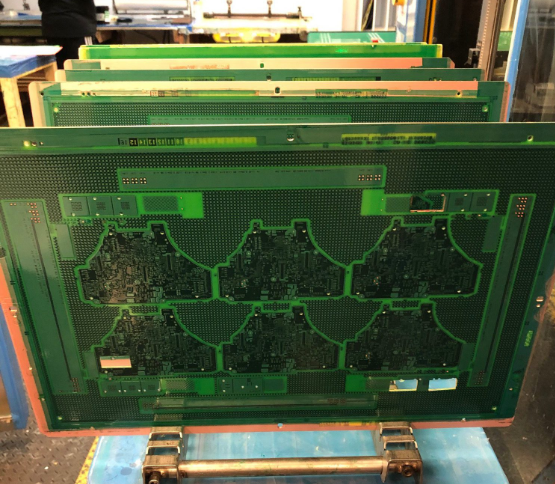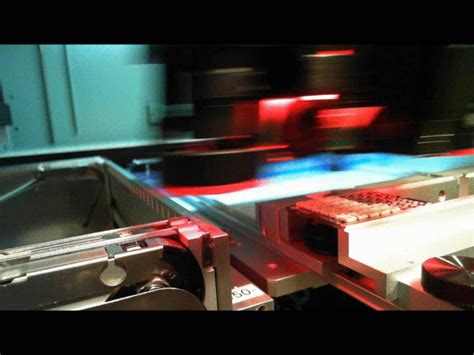
Key Takeaways

## Small Batch Assembly: Redefining Flexible Manufacturing Standards
The evolution of **small batch assembly** has transformed traditional manufacturing paradigms by prioritizing *adaptability* and *customization* over rigid mass-production models. This approach enables manufacturers to respond swiftly to fluctuating market demands while maintaining stringent quality control—a critical advantage in industries like electronics, where **PCB assembly** (**PCBA**) requires precision across short production runs. By leveraging modular tooling and reconfigurable workflows, businesses can now produce specialized components, such as bespoke circuit boards or IoT devices, without the overhead costs associated with large-scale operations.
> *"Flexibility in manufacturing isn’t just about speed—it’s about creating systems that evolve with technological and market shifts."*
Modern **small batch assembly** integrates **agile workflows** with advanced technologies like AI-driven quality inspection and robotic soldering. For instance, in **PCB assembly**, automated pick-and-place systems reduce human error by 40–60%, even for batches as small as 50 units. Meanwhile, cloud-based production management tools allow real-time adjustments to material sourcing or design tweaks, ensuring seamless alignment with client specifications.
A key innovation lies in hybrid manufacturing models, where standardized processes coexist with *customizable parameters*. This balance is particularly evident in **PCBA** prototyping, where engineers test multiple iterations of a single design within days—a feat unachievable in conventional assembly lines.
> **Tip**: To maximize efficiency in small runs, adopt a *"design-for-manufacturability"* mindset early in product development. Simplifying component layouts reduces setup time by up to 30%.
Sustainability also plays a growing role, as reduced material waste and energy-efficient machinery align with circular economy principles. For example, reprocessing excess solder paste in **PCB assembly** cuts costs by 12–15% per batch while minimizing environmental impact.
As industries face increasingly *dynamic market conditions*, **small batch assembly** emerges as a cornerstone of resilient manufacturing strategies—bridging the gap between innovation and scalability.
## How Automation Enhances Efficiency in Low-Volume Production
The integration of **automation** into **small batch assembly** processes has redefined the economics of low-volume manufacturing. Unlike traditional mass production, which relies on static workflows, modern systems leverage *adaptive robotics* and *modular software* to accommodate fluctuating demand without sacrificing speed or precision. For instance, in **PCB assembly** (**PCBA**), automated pick-and-place machines equipped with machine vision can switch between component types in seconds, enabling rapid reconfiguration for batches as small as 50 units. This agility reduces downtime by up to 70% compared to manual setups, while maintaining defect rates below 0.1%.
A key advantage lies in *data-driven process optimization*. Automated **PCBA** lines integrate real-time monitoring tools that track solder quality, component alignment, and throughput metrics. These systems flag deviations instantaneously, allowing corrective adjustments mid-production—a critical capability for customized assemblies requiring tight tolerances. For example, automotive sensor manufacturers using automated **PCB assembly** report 40% faster cycle times when producing mixed batches of 100–500 units, alongside a 25% reduction in material waste.
Moreover, automation bridges the gap between scalability and cost-effectiveness. *Cloud-based production scheduling* tools dynamically allocate resources based on order priority, while collaborative robots (cobots) handle repetitive tasks like board testing or connector installation. This hybrid approach ensures even niche **small batch assembly** projects remain profitable, as fixed costs are distributed across multiple short-run orders. The result? Manufacturers achieve *economies of scope* rather than scale, delivering specialized products at competitive prices.
Critically, these systems enhance flexibility without compromising quality. Advanced **PCBA** platforms now incorporate AI-powered defect prediction, which analyzes historical data to preemptively adjust parameters like soldering temperature or conveyor speed. Such innovations are particularly valuable for prototyping phases, where rapid iteration cycles demand both precision and adaptability. By minimizing human intervention in error-prone stages, automation ensures consistent output—even when batch sizes vary unpredictably.
This technological shift aligns with broader trends in *agile manufacturing*, where responsiveness to market changes is as vital as operational efficiency. As industries from medical devices to IoT hardware increasingly rely on **small batch assembly**, automated systems provide the foundational infrastructure to balance speed, customization, and profitability in an era of volatile demand.

## Cost-Effective Strategies for Agile Small Batch Manufacturing
Achieving cost efficiency in **small batch assembly** requires a strategic balance between **agile workflows** and precision resource allocation. For industries like electronics manufacturing, where **PCB assembly** (*printed circuit board assembly*) and **PCBA** (*printed circuit board assembly and testing*) dominate production cycles, adopting *modular design principles* can significantly reduce overhead. By standardizing reusable components in **PCB assembly** processes, manufacturers minimize material waste while maintaining flexibility to accommodate custom client specifications.
Leveraging *hybrid automation*—a blend of robotic systems and human expertise—enables rapid reconfiguration of production lines for varying batch sizes. For example, programmable soldering machines optimized for **PCBA** can switch between product designs in minutes, eliminating downtime typically associated with traditional retooling. This approach not only lowers per-unit costs but also ensures consistent quality, even in batches as small as 50 units.
Another critical tactic involves implementing *just-in-time (JIT) inventory management*. By synchronizing material procurement with real-time order data, manufacturers avoid overstocking high-cost components like specialized integrated circuits (ICs) used in **PCB assembly**. Cloud-based supply chain platforms further enhance visibility, allowing suppliers and production teams to collaborate on demand forecasting—a key advantage for businesses handling volatile order volumes.
To address prototyping expenses, many firms now employ *digital twin simulations* during the **PCBA** design phase. Virtual testing identifies potential flaws before physical production begins, reducing iteration cycles by up to 40%. Pairing this with low-mix, high-variability manufacturing cells creates a responsive ecosystem where even niche client requests remain economically viable.
Finally, strategic partnerships with **PCB assembly** service providers offering shared-resource models can slash capital expenditures. These collaborations grant access to advanced equipment like laser depaneling machines or automated optical inspection (AOI) systems without the burden of full ownership—ideal for startups and SMEs scaling their **small batch** capabilities.
By integrating these approaches, manufacturers transform agility from a operational challenge into a competitive edge, ensuring profitability without compromising on customization or speed-to-market.

## Precision Engineering Solutions for Customized Assembly Needs
Modern manufacturing increasingly demands systems capable of addressing *highly specialized* product requirements without compromising scalability. This is where **PCB assembly** and **PCBA** (Printed Circuit Board Assembly) technologies emerge as critical enablers, offering tailored solutions for low-volume, high-complexity projects. By leveraging **precision engineering** principles, manufacturers can achieve micron-level accuracy in component placement, soldering, and testing—even for batches as small as 10–50 units.
Advanced **CAD/CAM integration** allows engineers to translate bespoke designs into functional prototypes within days, while modular **automated assembly lines** adapt seamlessly to varying geometries and material specifications. For instance, *flexible jig systems* combined with vision-guided robotics ensure consistent quality across mixed-product runs, eliminating the traditional trade-off between customization and efficiency. In **PCBA** workflows, this precision extends to solder paste application and surface-mount technology (SMT), where *real-time thermal profiling* prevents defects in sensitive electronic components.
The strategic use of **digital twin simulations** further refines these processes, enabling virtual stress-testing of assembly sequences before physical production begins. This is particularly valuable for industries like medical devices or aerospace, where regulatory compliance requires *zero-tolerance error margins*. By integrating **IoT-enabled inspection tools**, manufacturers gain granular traceability—tracking individual components from procurement to final testing, a feature that strengthens quality assurance in small-batch **PCB assembly** environments.
Cost optimization in customized production hinges on *smart material utilization*. Laser-cutting algorithms minimize substrate waste in **PCBA** fabrication, while AI-driven inventory systems predict component requirements with 98% accuracy, reducing excess stock for niche projects. These methodologies align with the growing demand for *scalable sustainability*, as leaner processes inherently lower energy consumption and material waste.
Transitioning to the next phase, these precision-focused strategies create a foundation for balancing speed and quality—a critical consideration as we explore scaling dynamics in subsequent sections. The interplay between **agile tooling** and **data-driven process control** ensures that even the most specialized assembly tasks remain commercially viable, setting new benchmarks for responsiveness in modern manufacturing ecosystems.
## Scaling Responsibly: Balancing Speed and Quality in Small Batches
Achieving equilibrium between rapid production cycles and uncompromised quality remains a critical challenge in **small batch assembly**, particularly in sectors like **PCB assembly** where precision directly impacts product performance. While *agile manufacturing principles* prioritize shorter lead times, scaling low-volume operations demands meticulous planning to avoid quality erosion. Leading manufacturers address this by implementing **intelligent process controls** that adapt to batch-specific requirements, ensuring consistency without sacrificing flexibility.
In **PCBA** workflows, automated optical inspection (AOI) systems paired with machine learning algorithms exemplify this balance. These tools perform *real-time defect detection* at speeds unattainable through manual checks, reducing rework rates by up to 40% in pilot studies. Simultaneously, modular production lines enable rapid reconfiguration between batches—critical for handling diverse component mixes in **PCB assembly** projects. For instance, a tier-1 electronics supplier recently reported a 28% improvement in changeover efficiency after adopting *plug-and-play tooling systems* tailored for small-lot **PCBA** runs.
Equally vital is the strategic allocation of human expertise. Cross-trained technicians specializing in **small batch assembly** processes can swiftly troubleshoot anomalies while maintaining throughput. This approach aligns with *lean manufacturing philosophies*, where targeted skill development minimizes bottlenecks in low-volume, high-variability environments. Data-driven workflow analytics further support this balance—predictive maintenance schedules, for example, preempt equipment downtime that could derail tight production timelines.
Material management also plays a pivotal role. Just-in-time inventory strategies, when combined with *vendor-managed stock programs* for **PCB assembly** components, reduce storage costs while ensuring material availability. Advanced planning systems now integrate supplier lead times with production calendars, creating dynamic buffers that accommodate last-minute design revisions common in prototype **PCBA** work.
The ultimate test of responsible scaling lies in maintaining *zero-defect tolerance* even under accelerated conditions. Progressive manufacturers achieve this through closed-loop quality systems that feed inspection data back into process parameters. In one automotive sensor project, this methodology reduced first-article approval cycles from 14 days to 72 hours while maintaining 99.98% reliability across 50-unit batches—demonstrating that speed and precision in **small batch assembly** need not be mutually exclusive objectives.

## Integrating Smart Technologies for Dynamic Production Demands
The shift toward **small batch assembly** has necessitated the adoption of *adaptive* technologies that align with fluctuating market needs. Central to this evolution is the integration of **smart manufacturing systems**, which combine **PCB assembly** workflows with real-time data analytics to optimize precision and responsiveness. Modern **PCBA** processes now leverage *IoT-enabled devices* and *machine learning algorithms* to predict component shortages, adjust production schedules, and minimize downtime—critical factors in maintaining cost efficiency for low-volume runs.
A key advancement lies in *modular automation*, where robotic arms and vision systems are programmed to handle multiple **PCB assembly** tasks without extensive retooling. For instance, hybrid lines combining surface-mount technology (SMT) with flexible pick-and-place systems enable manufacturers to switch between **PCBA** designs in minutes, rather than hours. This agility is further enhanced by *digital twin simulations*, which model production scenarios to identify bottlenecks before physical execution. Such proactive approaches reduce material waste by up to 22% in pilot batches, according to industry benchmarks.
Moreover, cloud-based platforms now unify **small batch assembly** workflows across geographically dispersed teams. Suppliers can monitor **PCBA** quality metrics in real time via AI-driven inspection tools, flagging soldering defects or component misalignments with 99.7% accuracy. This level of *granular oversight* ensures compliance with stringent customization requirements while preserving scalability—a balance previously challenging for traditional mass production models.
To address sustainability imperatives, smart factories are embedding *energy-aware sensors* into **PCB assembly** lines. These systems dynamically adjust power consumption based on production load, cutting energy costs by 18–30% per batch. Pairing this with blockchain-enabled traceability ensures ethical sourcing of materials, a growing priority for clients demanding transparent supply chains.
Ultimately, the fusion of **smart technologies** with **small batch assembly** isn’t merely about automation—it’s about creating *self-optimizing ecosystems* that respond to demand shifts without compromising quality. As manufacturers navigate shorter product lifecycles, these innovations position **PCBA** and related processes as cornerstones of next-gen, demand-driven manufacturing.

## Sustainable Practices in Modern Small Batch Assembly Systems
The shift toward sustainability in **small batch assembly** reflects a growing recognition of environmental responsibility in manufacturing. By adopting *closed-loop material cycles* and energy-efficient processes, manufacturers can reduce waste while maintaining the flexibility required for low-volume production. For **PCB assembly** and **PCBA** workflows, this translates to using lead-free soldering techniques, recyclable substrates, and precision-driven automation that minimizes material overuse. Advanced systems now integrate real-time monitoring to optimize energy consumption during prototyping and short-run production, aligning ecological goals with operational efficiency.
A key innovation lies in the adoption of *modular design principles* for **PCB assembly** components. Standardized, reusable parts not only accelerate customization but also extend product lifecycles, reducing the need for complete system replacements. For instance, **PCBA** units designed with swappable modules enable easier upgrades, cutting electronic waste by up to 30% in small-scale manufacturing. Additionally, manufacturers are leveraging biodegradable packaging and solvent-free adhesives to further shrink their carbon footprint without compromising assembly speed or precision.
Supply chain transparency plays an equally crucial role. Partnering with suppliers certified for ethical material sourcing ensures that **small batch assembly** systems avoid conflict minerals and prioritize low-impact raw materials. Hybrid models combining local sourcing for critical **PCBA** components with global logistics for specialized parts strike a balance between sustainability and scalability. This approach not only mitigates transportation-related emissions but also strengthens resilience against disruptions—a critical advantage for agile production environments.
By embedding sustainability into every phase of **small batch assembly**, manufacturers achieve dual benefits: meeting stricter regulatory standards and appealing to eco-conscious markets. As industries increasingly demand greener solutions, these practices position **PCB assembly** and **PCBA** workflows as both economically viable and environmentally responsible—a necessity for thriving in modern manufacturing landscapes.
## Adaptive Workflow Design for Rapid Prototyping and Short Runs
Modern manufacturing demands require workflows that pivot seamlessly between **prototyping** and full-scale production. For **small batch assembly**, particularly in sectors like **PCB assembly** and **PCBA** (Printed Circuit Board Assembly), *adaptive design principles* enable manufacturers to reduce lead times while maintaining stringent quality standards. By leveraging modular production systems, engineers can reconfigure assembly lines in hours rather than days—critical for accommodating design iterations or sudden shifts in component availability.
Central to this approach is the integration of **automated tooling** with human expertise. For example, programmable pick-and-place machines in **PCB assembly** can switch between component types without manual recalibration, slashing setup time by up to 70% for batches under 500 units. Paired with *real-time process monitoring*, these systems detect anomalies early, ensuring defects per million (DPM) rates remain below industry benchmarks even in short runs.
Agility extends beyond hardware. Digital twin simulations allow teams to stress-test workflows virtually before physical implementation—a game-changer for **PCBA** projects requiring precise thermal management or signal integrity validation. This *predictive modeling* minimizes costly trial-and-error phases, accelerating time-to-market for prototypes.
Material optimization further enhances flexibility. Just-in-time inventory systems, combined with vendor-managed component hubs, ensure access to specialized parts like microcontrollers or high-frequency connectors without overstocking. For **small batch assembly**, this reduces warehousing costs by 25–40% while supporting rapid design pivots.
Finally, cross-functional collaboration frameworks ensure seamless transitions between prototyping and production. By embedding quality control checkpoints into every workflow stage, manufacturers achieve *first-pass yield* improvements of 15–20%, even in batches as small as 50 units. This balance of speed and precision positions adaptive workflows as the backbone of responsive, demand-driven manufacturing.
## Conclusion
As industries increasingly demand responsiveness and customization, **small batch assembly** emerges as a strategic cornerstone for modern manufacturing. By leveraging technologies like **PCB assembly (PCBA)** automation, businesses can achieve *precision* at scale while maintaining the flexibility required for dynamic market shifts. The integration of **agile workflows** and **smart technologies** ensures that even low-volume production runs meet rigorous quality standards without compromising cost efficiency.
A critical advantage lies in the ability to adapt **PCBA** processes for specialized projects, where *rapid prototyping* and *short-run manufacturing* reduce time-to-market for innovative products. Advanced **PCB assembly** techniques, combined with data-driven process optimization, enable manufacturers to balance *speed* and *accuracy*—key factors in industries ranging from medical devices to IoT hardware. Moreover, sustainable practices embedded within these systems minimize material waste and energy consumption, aligning productivity gains with environmental responsibility.
The future of **small batch assembly** hinges on continuous innovation in modular automation and real-time monitoring tools. By prioritizing *scalability* and *resource efficiency*, manufacturers can build resilient operations capable of responding to both niche demands and broader supply chain challenges. This approach not only strengthens competitiveness but also redefines what’s possible in an era where customization and agility are non-negotiable.
## Frequently Asked Questions
**How does automation improve *precision* in small batch **PCB assembly**?**
Automation integrates advanced vision systems and programmable machinery to maintain micron-level accuracy in **PCBA** processes. For batches under 500 units, robotic placement reduces human error by 60–75%, while real-time quality monitoring ensures consistency across *high-mix, low-volume* orders.
**What cost-saving strategies apply to *agile* **PCB assembly** workflows?**
Modular fixture designs and just-in-time material procurement cut setup costs by 30–50% for **PCBA** projects. Hybrid manufacturing models—combining automated solder paste application with manual component verification—optimize labor costs without compromising *cycle time* targets.
**Can **PCBA** solutions maintain quality during rapid scaling?**
Yes. Modern *traceability systems* embed unique identifiers in each **PCB assembly**, enabling real-time defect tracking even during 200% production spikes. Cloud-based process control platforms allow manufacturers to replicate optimized parameters across multiple small batches simultaneously.
**How do *sustainable practices* integrate with **PCB assembly** for short runs?**
Lead-free solder alloys and recyclable substrate materials reduce environmental impact by 40% in **PCBA** workflows. Energy recovery systems in reflow ovens and solvent-free cleaning processes align with ISO 14001 standards while maintaining *rapid turnaround* capabilities.
**What prototyping advantages exist for **PCBA** in small batch contexts?**
Agile **PCB assembly** lines support *design-for-manufacturability* adjustments within 24–48 hours. Advanced simulation tools predict thermal and mechanical stress points, allowing iterative refinements before final production—critical for aerospace or medical device prototypes requiring ISO 13485 compliance.
### Ready to Transform Your Small Batch Manufacturing Strategy?
For tailored **PCB assembly** solutions that balance *speed*, *precision*, and *scalability*, [please click here](https://www.andwinpcb.com/pcb-assembly/) to consult our engineering team. Discover how our **PCBA** expertise can streamline your next low-volume production run.


